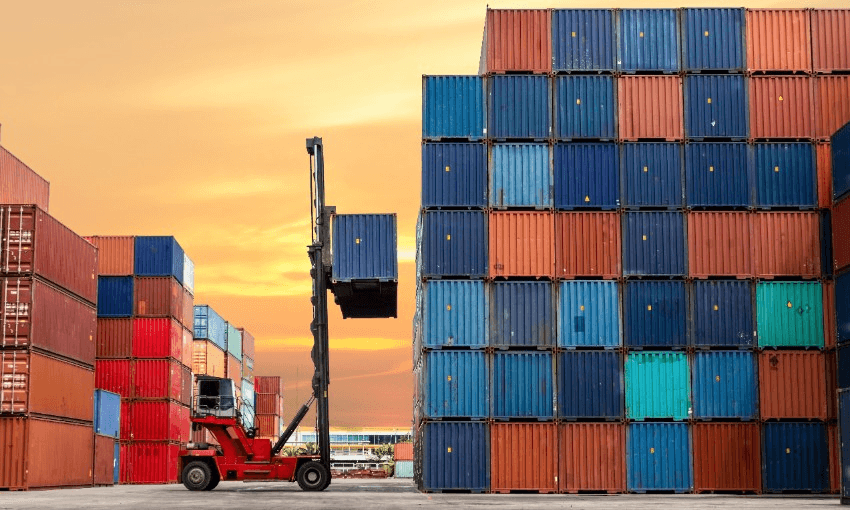Despite global economic uncertainly, a new report shows New Zealand’s land-based industry exports are humming – with plenty of it still going to the world’s most populous country.
What’s all this then?
Much of New Zealand’s economy might still be spluttering from the fallout of Covid-19, but exports of meat, dairy and horticulture products have been surging along in fine pre-pandemic fashion.
According to a report by the New Zealand Institute of Economic Research, agricultural export revenue from February 1 to June 24 this year is up nearly $1 billion on the same period last year – impressive results given the economic upheaval around the world and protectionism that’s unfolding in certain countries.
While forestry, seafood and manufacturing exports were knocked to the mat and still haven’t recovered, dairy, meat and horticulture are up a spirited $713m, $80m and $292m respectively.
What’s behind the increase?
NZIER principal economist and author of the report Chris Nixon has credited the resilience of agricultural exports in part to New Zealand’s image as a source of clean, high-quality products and trusted institutions. With doubt and fear spreading as prolifically as the virus, it seems New Zealand’s brand is increasingly becoming a symbol of stability where overseas consumers know and trust what they’re getting.
However, it’s the enduring appetite of the Asian market – particularly China – that continues to drive the demand for New Zealand’s goods.
Since 2017, China has been New Zealand’s largest trading partner. In the year ending December 2019, 23% of New Zealand’s total goods and services exports and 16% of imports by value were with China.
Nixon said China’s emergence into the market in the last two decades and its signing of the Free Trade Agreement (FTA) in 2008 paved the way for easy and lucrative trade between the two countries, offsetting the challenges posed by EU and US subsidies. Such a legacy is not easily undone, even by a pandemic.
“The combined impact of China and associated third country demand has lifted demand to such an extent that the subsidy impact of the US and EU has diminished,” Nixon said. “We have played our trade policy cards well in this game since we have recognised and welcomed China into the world economy.”
New Zealand has relied on such trade cards to extract it from an economic recession once before. Dr Murat Üngör, senior lecturer of economics at the University of Otago, said exports to the Asian market – particularly China – helped heave New Zealand out of recession during the GFC.
“The 2008-2009 global financial crisis demonstrated how the New Zealand economy climbed out of the recession thanks to the export-led recovery. This was partly due to newly fostered trading relations between NZ, China and other Asian markets,” Üngör said.
Is it wise to trade so heavily with China?
As the first country to feel Covid-19 in any real force, China’s giant economy virtually ground to a halt as authorities dealt with the pandemic in the first months of the year. New Zealand exports suffered immediately, with cancelled orders leaving containers of goods languishing at ports throughout the country. The effect was so severe it prompted many to question why such a risky bilateral trade arrangement was allowed to evolve in the first place.
Last month, Üngör released a report that revealed the true impact of Covid-19 on China’s economy – a historic 9.8% slump in the March quarter. However, in the following quarter, China’s activity started to increase, leading to more positive expectations about it’s buying power and demand for overseas goods.
Üngör said it’s plausible to expect that China continues being New Zealand’s major trading partner post-pandemic, but diversifying export partners and products remained an important strategy.
A telling point raised in the NZIER report is that no matter how much New Zealand relies on trade with China now, it is dwarfed by the dependence on the UK earlier in the 20th century.
“We note that New Zealand’s dependence on a small number of products in the British market left us wide open to a larger risk factor relative to the much broader connection we have with China.”
How long will it last?
According to the NZIER report, the strength of New Zealand’s trade relationship with China should allow “cautious optimism” around the continued export trend.
Obviously, there are many pitfalls that could hamper progress, not the least of which is the coming recession. Domestic employment issues, particularly in the fruit industry, along with the reduction of air freight capacity, the raising of the New Zealand dollar and less long-term investment could also become issues further down the track, the report notes.
Of course, the longest shadow stretching over all of this is the pandemic, and how much it cripples economies across the world.
“The continued persistence of Covid-19, particularly in the US and the United Kingdom, is a concern. How this plays out is very uncertain. It may affect US consumption of retail goods which could impact on Asian demand and, so, incomes. This means that they may have less to spend on New Zealand products and services,” the report said.
